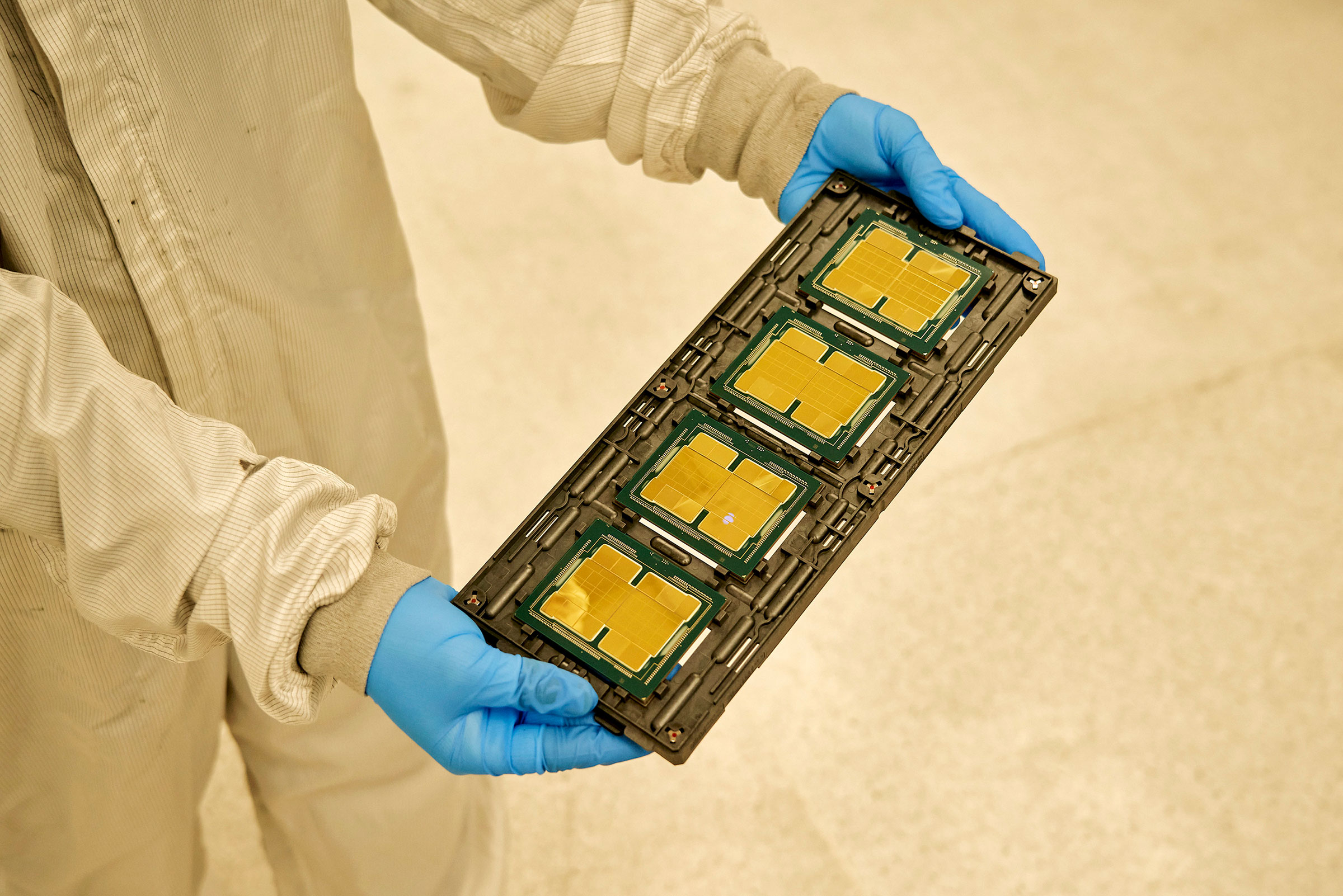We are standing at the precipice of the digital age. The lightning-fast pace of the tech evolution we are experiencing today will seem slow in the not-so-distant future as technology continues to change how we interact. Semiconductors are the brains accelerating this digital revolution. These tiny chips power education, business, health care, and more. They are vital to us today and essential for the world we want to live in tomorrow. But as demand grows, chip supply is tightening. Waves of the pandemic, the war in Ukraine, and supply-chain shortages have shown us just how fragile our technology ecosystem is—even leaving some industries at a standstill.
We need bold new ways to strengthen our industrial capacity if we hope for a future filled with personalized medicine and autonomous cars. Now is our opportunity—as businesses, governments, and citizens—to chart a better, more resilient course. That’s why public-private partnerships are vital to our innovation, well-being, and prosperity.
Public-sector investment boosts private-sector productivity by 15% to 45% by supporting the premarket foundations for success in areas like research and development, manufacturing capacity, and workforce training.
Workforce development and incentives to build manufacturing facilities like Intel’s new factories in the U.S. and E.U. create thousands of jobs, as well as much-needed supply-chain infrastructure. In turn, the cities and towns that welcome these new facilities become magnets for other industries. And investing in research and development creates life-changing technologies for the future. The internet, GPS technology, and the Human Genome Project all stemmed from federal funding—and their public benefit is impossible to measure.
A weekly newsletter featuring conversations with the world’s top CEOs, managers, and founders. Join the Leadership Brief
Today, 80% of chips are produced in Asia. That is no accident. South Korea, mainland China, and Taiwan implemented policies that recognize the strategic importance of the industry. But by having a high concentration of advanced semiconductor manufacturing in one region, the world’s digital foundation is susceptible not only to geopolitical risks, but also to resource constraints and natural disasters. A one-hour power outage in a small area of Taiwan affected 10% of the world’s dynamic random-access memory (DRAM) supply.
We have an ambitious goal to restore chip manufacturing in the U.S. and E.U. to 50% of the world’s total—but a coordinated effort between public and private sectors will be key.
Read More: Inside the Taiwan Firm That Makes the World’s Tech Run
The E.U. recently announced a public-private strategy for advancing its semiconductor industry. The European Chips Act adds €15 billion to an existing €30 billion in public investments to create new STEM-focused programs, attract new talent to Europe, and build new infrastructure. In response, Intel announced it would spend as much as €80 billion over the next decade to build a next-generation chip ecosystem across the E.U. And in the U.S., hope for building a more robust domestic supply chain lies in the CHIPS for America Act, a plan to invest $52 billion in U.S. chip manufacturing, design, and research. This investment would attract significant participation from the private sector. Intel alone anticipates investing an additional $100 billion in U.S. manufacturing capacity over the next decade, in addition to a new $20 billion foundry announced this year.
Critics argue that the free market is best at identifying successful industries. But this ignores the necessity of governments to help structure the economy in the national interest when there is a market distortion due to policies elsewhere. The challenge is just too big and complex for public and private entities to assume we don’t need each other’s help.
As our world grows more and more digital, let’s not leave our most vital industries to chance. Only by engaging public and private stakeholders can we simultaneously drive innovation, meaningful social outcomes, and economic prosperity for all. Let us enter the digital age with intent—and unfettered access to critical technologies for society.
Gelsinger is CEO of Intel
- Donald Trump Is TIME's 2024 Person of the Year
- Why We Chose Trump as Person of the Year
- Is Intermittent Fasting Good or Bad for You?
- The 100 Must-Read Books of 2024
- The 20 Best Christmas TV Episodes
- Column: If Optimism Feels Ridiculous Now, Try Hope
- The Future of Climate Action Is Trade Policy
- Merle Bombardieri Is Helping People Make the Baby Decision
